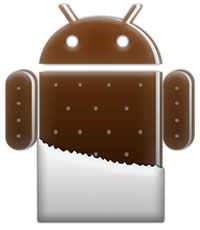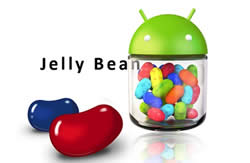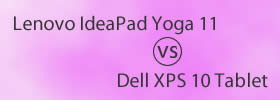Difference between Android 4.0 and Android 4.1
Key Difference: Android 4.0 Ice Cream Sandwich was publicly released on October 19, 2011, with the source code for the OS becoming public on November 14, 2011. The Android 4.0 was an upgrade to the leading 2.3 Gingerbread and offered a variety of brand new features. Android 4.1 Jelly Bean was released in October 2012, and was launched on LG Nexus 4 and Samsung Nexus 10. Jelly Bean 4.1 was an upgrade to the Ice Cream Sandwich and offered a few added features to the original ICS.
 Android is one of the most popular smartphone operating systems developed by Google. Android is a Linux-based operating system owned and operated by the Open Handset Alliance, a consortium of 84 leading firms, which includes mobile handset makers, application developers, some mobile carriers and chip makers. The consortium is lead in part by Google, as well as HTC, Sony, Dell, Intel, Motorola, Qualcomm, Texas Instruments, Samsung Electronics, LG Electronics, T-Mobile, Sprint Nextel, Nvidia, and Wind River Systems.
Android is one of the most popular smartphone operating systems developed by Google. Android is a Linux-based operating system owned and operated by the Open Handset Alliance, a consortium of 84 leading firms, which includes mobile handset makers, application developers, some mobile carriers and chip makers. The consortium is lead in part by Google, as well as HTC, Sony, Dell, Intel, Motorola, Qualcomm, Texas Instruments, Samsung Electronics, LG Electronics, T-Mobile, Sprint Nextel, Nvidia, and Wind River Systems.
Android is open source software, which means that it is free of cost and can be used, modified and re-sold. This is one of the reasons for its massive popularity, it allowed users to create and change any and all of Androids codes and settings trying to create the perfect OS. Android also has a large community of developers that constantly write applications and codes for the system. In the beginning stages of development, Android was considered to be a rookie gearing up to fail; however, it has since then proven a leader in the smartphone market. The company has various different versions of its Android operating system and has named each system after a delicious dessert. Android 4.0 is named Ice Cream Sandwich, while Android 4.1 is Jelly Bean.
Android 4.0 Ice Cream Sandwich was publicly released on October 19, 2011, with the source code for the OS becoming public on November 14, 2011. The Android 4.0 was an upgrade to the leading 2.3 Gingerbread and offered a variety of brand new features. Android also had version 3.0, which was solely reserved for tablets. The company offered updated features such as: soft buttons, separation of widgets, easy to create new folders, customizable launcher, improved visual voicemail, pinch-to-zoom function, screenshot capture, improved keyboard, ability to access apps from lockscreen, real-time speech diction, Face Unlock feature, tabbed web browser, automatic syncing of browser with Chrome bookmarks, new typeface for the UI, ability to shutdown background apps, improved camera app, built-in photo editor, new gallery layout, new ‘People’ app with social network integration, status updates and hi-res images, NFC compatibility, hardware acceleration, Wi-Fi direct and 1080p video recording.
 Android 4.1 Jelly Bean was released in October 2012, and was launched on LG Nexus 4 and Samsung Nexus 10. Jelly Bean 4.1 was an upgrade to the Ice Cream Sandwich and offered a few added features to the original ICS. In terms of looks and layout, 4.1 are pretty similar to the 4.0, with the major difference being in speed. Android 4.1 is faster compared to the 4.0. The company offered features such as: Photo Sphere panorama photos, keyboard with gesture typing, ability to swipe directly to camera on lock screen, bigger notification controls, screensavers, multiple user accounts on tablets, wireless display support, triple-tap to magnify the entire screen, pan and zoom with two fingers. Speech output and Gesture Mode navigation for blind users, new clock app, uniform interface for all devices, notification control (allows users to select which app to provide notifications), SeLinux, Always-on VPN, Premium SMS confirmation, group messaging, Bluetooth gamepads and joysticks support.
Android 4.1 Jelly Bean was released in October 2012, and was launched on LG Nexus 4 and Samsung Nexus 10. Jelly Bean 4.1 was an upgrade to the Ice Cream Sandwich and offered a few added features to the original ICS. In terms of looks and layout, 4.1 are pretty similar to the 4.0, with the major difference being in speed. Android 4.1 is faster compared to the 4.0. The company offered features such as: Photo Sphere panorama photos, keyboard with gesture typing, ability to swipe directly to camera on lock screen, bigger notification controls, screensavers, multiple user accounts on tablets, wireless display support, triple-tap to magnify the entire screen, pan and zoom with two fingers. Speech output and Gesture Mode navigation for blind users, new clock app, uniform interface for all devices, notification control (allows users to select which app to provide notifications), SeLinux, Always-on VPN, Premium SMS confirmation, group messaging, Bluetooth gamepads and joysticks support.
Android 4.0 and 4.1 are quite similar, with only minute differences and extra added features. It is quite difficult to differentiate one from the other at first glance. However, they are a bit different. A major difference is faster performance on 4.1. Jelly Bean is faster compared to ICS. Jelly Bean also provides better contacts layout, allowing users to add high-resolution photos or sync photos directly from their Google+ profiles. On the notifications page, the clock and text is bigger on Jelly Bean compared to ICS. Also Jelly Bean allows users to decide which apps will send notifications. In the Accounts menu in Settings, Jelly Bean shows a drop down menu dedicated to social networking apps, while in ICS the user would have to go to Accounts & Sync in Settings. In ICS, the widgets on the homescreen do not interact with the present icons, while in Jelly Bean the icons move to make room for the widget. YouTube has also been customized in Jelly Bean. Google has also improved Google Now functionality and now offers personalized results. Jelly Bean is basically an upgraded and a better version of Ice Cream Sandwich.
Image Courtesy: androiduserarticles.blogspot.com, fonearena.com









Add new comment